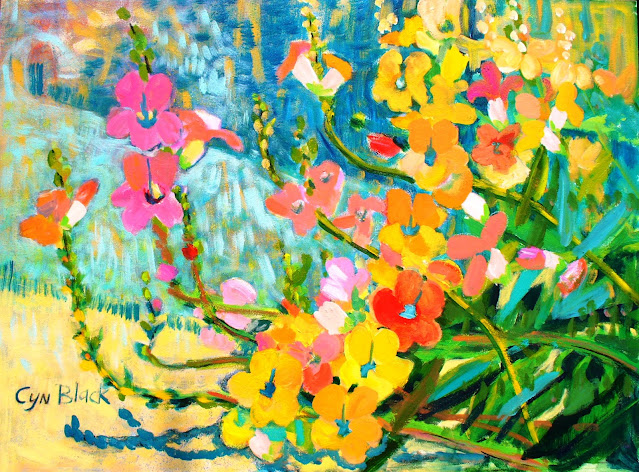When the weather is perfect - not too hot, not too cold, and dry - I enjoy taking my canvas outside to paint in my garden.
But it's not a simple or easy proposition, even with perfect weather. Here are a few things to consider:
1. Comfort: Figure out a set up with chair, easel, and paints that is comfortable. Uncontrollable factors include heat, wind, water, bugs, and passers-by. If you need to carry your equipment in to a site, keep it as simple as possible.
2. Lighting: The sun is your lighting, and the subject and all the value relationships change rapidly with the angle of the light and the reflections or cover of clouds. The three issues with light are the angle of lighting across the landscape, the color of light on the landscape and page, and the intensity of light in your eyes; you will need to paint during the same hour every day in order to have somewhat consistent light, and wear a hat to prevent glare.
3. Location: Be sure to spend a short time walking around the location, absorbing the scene until you have found something that appeals to you enough to get started. The use of a viewfinder at this point can be vital in narrowing the field of vision to help find the right subject.
4. Simplification is an important ability when painting outdoors, because the view is so complex. You're immersed in the subject. You're consumed by the air and the movement, and the expanse. It's helpful to choose a concept, and describe it in one sentence, before you start painting. That is, describe the essential aspect of the view that you want to capture. Repeating this brief definition as you work helps to keep you from getting overwhelmed and derailed.
Three of my favorite paintings were started outside, then finished with photographs:



Comments
Post a Comment